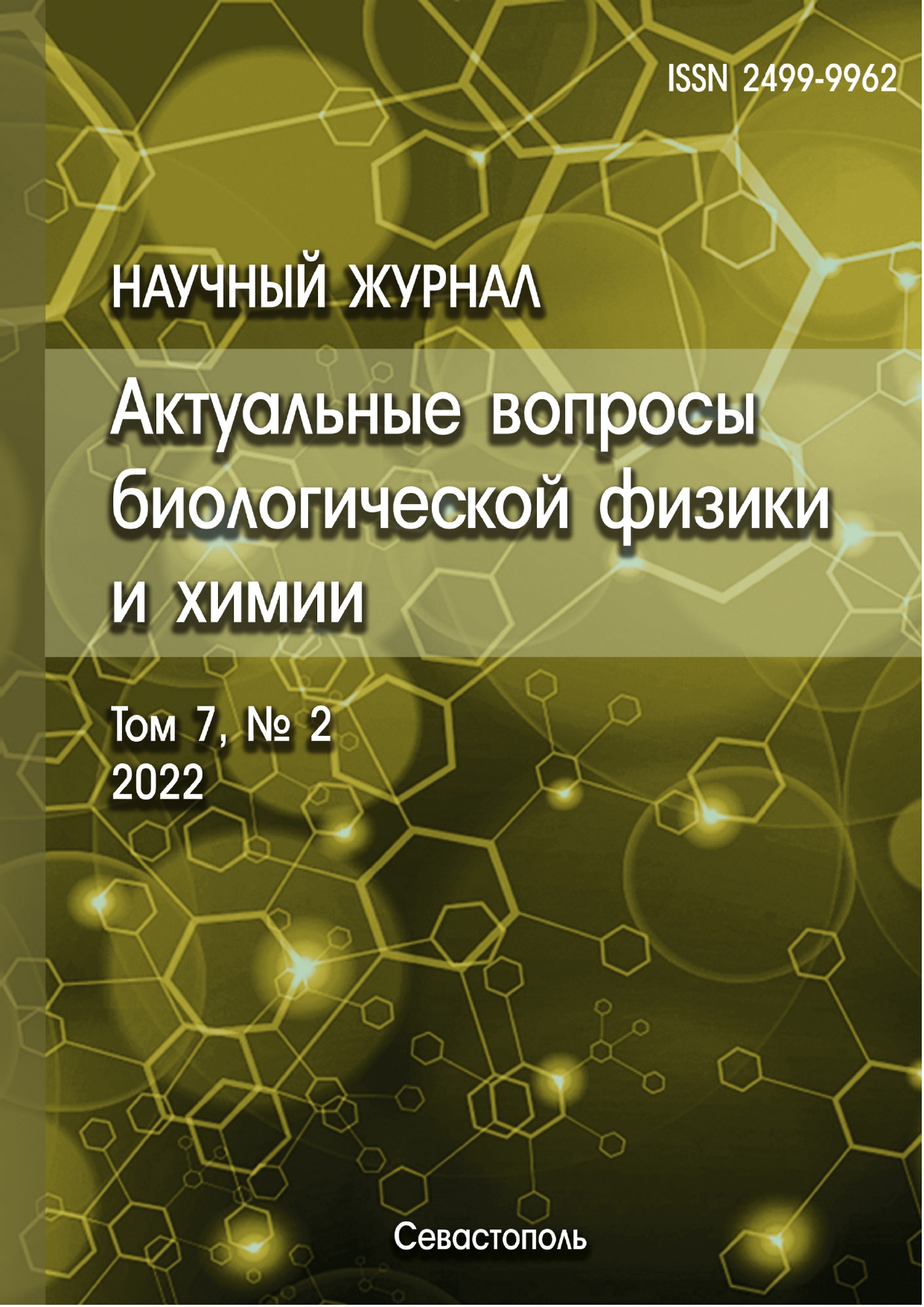Moscow, Russian Federation
Moscow, Moscow, Russian Federation
Moscow, Moscow, Russian Federation
Moscow, Moscow, Russian Federation
Moscow, Moscow, Russian Federation
Moscow, Moscow, Russian Federation
The formation of complexes and crystals of bacterial nucleoid DNA inside bacterial cells in response to adverse external influences is of great interest both in biophysics and structural biology, and in various fields of industry. The main role in the condensation and crystallization of DNA in bacteria under stressful conditions (starvation, temperature, oxidative, and other types of stress) is played by DNA-binding proteins DPS. In this work, the dynamic behavior and structure of Escherichia coli DPS protein complexes in solution with short-chain DNA (25 base pairs) are studied using classical molecular dynamics in the all-atom approximation with a change in the concentration of the phenolic lipid 4-hexylresorcinol, which is a chemical analog of bacterial anabiosis inducers. The effect of changing the concentration of 4-hexylresorcinol from 0 to 50, 100 and 500 molecules on the DNA-DPS complex is being studied. By searching for the linear interaction energy, data were obtained on the free energies of DNA-protein binding without and in the presence of 4-hexylresorcinol. It has been shown that high concentrations of 4-hexylresorcinol promote the formation of DNA complexes with DPS. To identify the features of the dynamic behavior of DNA and protein, the principal component analysis was carried out. The spatial and energy characteristics of the complexes was obtained.
DPS, DNA stabilization, 4-hexylresorcinol, Escherichia coli, molecular dynamics
1. Tereshkin E.V., Tereshkina K.B., Kovalenko V.V., Loiko N.G., Krupyanskii Y.F. Structure of DPS protein complexes with DNA. Russian Journal of Physical Chemistry B, 2019, vol. 13, no. 5, pp. 769-777, doi:https://doi.org/10.1134/s199079311905021x. EDN: https://elibrary.ru/CCCLBC
2. Bukharin O.V., Gintsburg A.L., Romanova Yu.M., El-Registan G.I. Survival mechanisms of bacteria. M.: Medicine, 2005, 367 p. (In Russ.) EDN: https://elibrary.ru/PNRUJF
3. Nikolaev Y.A., Tutel'yan A.V., Loiko N.G., et al. The use of 4-Hexylresorcinol as antibiotic adjuvant. PLoS One, 2020, vol. 15, no. 9, p. e0239147, doi:https://doi.org/10.1371/journal.pone.0239147. EDN: https://elibrary.ru/RDFCJQ
4. Tereshkin E.V., Loiko N.G., Tereshkina K.B., Krupyanskii Y.F. Migration of 4-Hexylresorcine Through Escherichia coli Cell Membranes. Russian Journal of Physical Chemistry B, 2021, vol. 15, no. 6, pp. 1026-1035, doi:https://doi.org/10.1134/S1990793121060099. EDN: https://elibrary.ru/DRLYIW
5. Tereshkin E.V., Tereshkina K.B., Krupyansky Yu.F. Migration of orcinol through model membranes of Escherichia coli. Russian Journal of Biological Physics and Chemistry, 2020, vol. 5, no. 4, pp. 619-622. (In Russ.) EDN: https://elibrary.ru/UHFBAH
6. Loiko N.G., Mulyukin A.L., Kozlova A.N., Kaplun A.P., Sorokin V.V., Borzenkov I.A., Nikolaev Yu.A., Kaprelyants A.S., El-Registan G.I. Influence of hexylresorcin, a chemical analogue of microbial auto-inducers of suspended animation, on the stability of membrane structures. Applied Biochemistry and Microbiology, 2009, vol. 45, no. 2, pp. 181-187. (In Russ.) EDN: https://elibrary.ru/JWNPIR
7. Krupyansky Yu.F., Knox P.P., Loiko N.G., Abdulnasyrov E.G., Korotina O.A., Stepanov C.A., Zakharova N.I., Nikolaev Yu.A., El-Registan G.I., Rubin A.B. Influence of chemical chaperones on the properties of lysozyme and protein of the reaction center of bacteria Rhodobacter sphaeroides. Biophysics, 2011, vol. 56, no. 1, pp. 13-30. (In Russ.) EDN: https://elibrary.ru/OOZKPB
8. Grant R., Filman D., Finkel S. et al. The crystal structure of Dps, a ferritin homolog that binds and protects DNA. Nat Struct Mol Biol, 1998, vol. 5, pp. 294-303, doi:https://doi.org/10.1038/nsb0498-294.
9. Aqvist J., Marelius J. The linear interaction energy method for predicting ligand binding free energies. Combinatorial chem. & high throughput screening, 2001, vol. 4, no. 8, pp. 613-626, doi:https://doi.org/10.2174/1386207013330661.
10. Amadei A., Linssen A.B., Berendsen H.J. Essential dynamics of proteins. Proteins, 1993, vol. 17, no. 4, pp. 412-425, doi:https://doi.org/10.1002/prot.340170408.










